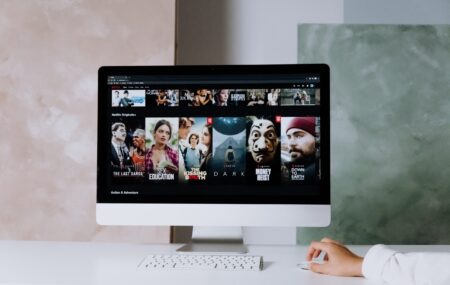In the ongoing battle of wits between digital and TV media owners, it’s clear that the truth lies somewhere in between. Google and Facebook gladly proclaim the imminent demise of linear TV, despite often heavily advertising on TV themselves, whereas Thinkbox and its shareholders (ITV, C4, Sky, Turner and UKTV) gladly parade the fact that linear TV is not dead at all so…long live TV!
In such a polarised debate it’s important to question the data to really understand what is going on underneath the headlines. How are consumers behaving, as opposed to what businesses that profit from their supposed behaviour would have you think?
Linear TV (watching live)
Kids (ages 4-9) impacts are down across all TV, but most significantly across stations aimed at this age group. Subscription services such as Disney and Sky stations have seen the biggest declines.
It’s not just children’s impacts that are struggling:
- Over the last 10 years, children’s linear TV impacts have fallen by 32%
- Young adult viewing has declined the most since 2009 with 16-24 year old adult impacts down 43% over the last 10 years
- Adult viewing, however, has remained relatively stable increasing by 3.4% over the last 10 years (and decreasing by 3.2% in the last 4 years). Breaking this down further: adults aged 35-44 and 45-54 have remained relatively flat with older viewers 55+ increasing by 40% since 2009 and 13% since 2015
- Although in general, the population is getting older, the shift in population doesn’t account for the shift in viewing (55+ year olds have increased 17% since 2009, children have increased by 8% and 16-34 year olds have decreased by 1.3%)
Subscription and Broadcast Video on Demand (SVOD, BVOD) and YouTube
- 55% of children have access to SVOD services according to BARB. This is only marginally less than 16-24 year olds at 62% access and 25-34 year olds at 56%
- Kids viewing on YouTube is on the rise, according to Ofcom:
- 71% of 5-7 year olds, 81% of 8-11 year olds and 90% of 12-15 years olds use YouTube to watch video content online (2017 children and parents media use and attitudes report)
- According to a YouGov Profiles survey, in the last 30 days (at the time of writing), 28% of 18-24 year olds have watched content on All4 and 21% on have viewed content on ITV hub compared to 49% who claim to have watched commercial TV in the last week
All Response Media viewpoint
‘So, what’…I hear you say. Younger audiences are in decline for linear TV viewing…tell me something I didn’t know! There are several crucial points to consider here that are important for the now and for the future.
- Understanding the detail of the data is important. Both sides of the argument have a point. Broad adult audiences are relatively flat on linear products but that is being strongly influenced by the rise in older audiences. This gives advertisers targeting older demographics an even better opportunity to use TV to drive more efficient audience reach than any other channel.
- Even with the decline in linear viewing amongst the younger audiences, there is certainly still scale in linear TV – reaching 85% of 16-24 year olds in a month (January 2019 BARB/Thinkbox) It is less efficient than it was, but the diversification of viewing habits mean that TV is still the juggernaut that helps to drive behaviour, change and action.
- TV is not a singular bucket. Stations, buying audiences, dayparts, days of the week and many more variables mean that you can enhance your targeting of an audience by simply picking the right variables and optimising aggressively towards them.>
- Lastly…the future is coming. And it’s probably accelerating towards us all faster than we would like to believe. Sky is fully embracing this future with the advent of their Sky Q platform which actively pushes the viewer towards a video on demand environment. They’ve even invited Netflix into their house which could be a masterstroke. At least in their bid to win the subscription wars. Channel 4 have long recognised the importance of VOD, but premium pricing has slowed their progress.
There is no doubt that we will see a future where the schedule is almost exclusively in the hands of the viewer. At All Response Media, we are cognisant of that future and we are already actively testing and evaluating these formats to do what we’ve always done…To establish the value to advertisers who want to see tangible returns from their media investment. The future is not here yet but when it comes (and it will!) we will still be focused on using data, people and technology to grow our client’s businesses.
 4 min read
4 min read 15 March, 2019
15 March, 2019 by
by 

















